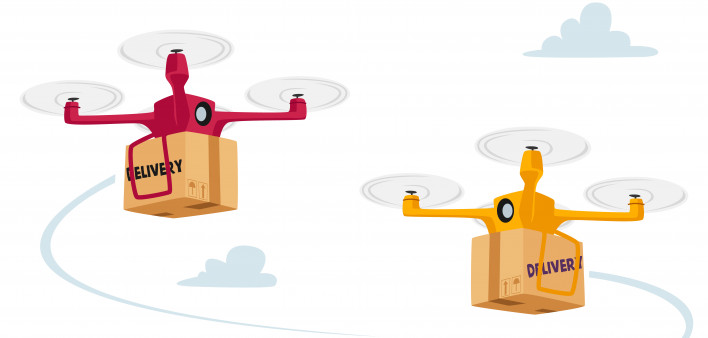Could drones be the future of getting antiretroviral treatment and other medications to people in hard-to-reach areas?
Some scientists think so. At the 24th International AIDS Conference (AIDS 2022) last week in Montreal, two teams presented research testing the technology in Uganda and Guinea. This approaches could potentially also help in the United States, especially in rural and Indigenous communities.
In Uganda, researchers found that it was feasible to use medical drones to deliver antiretroviral therapy (ART) to people living with HIV in the remote Kalangala District, a collection of dozens of islands scattered across Lake Victoria.
“Expanding the use case is how we are going to make [drone ART delivery] viable,” said Rosalind Parkes-Ratanshi, MD, PhD, of the Academy for Health Innovation in Kampala and the University of Cambridge, who led the research. “We also have the advantage of not being the first mover, and the technology is becoming cheaper.”
The Kalangala District stands to benefit greatly from the innovative approach. It has the highest HIV prevalence in Uganda: 27% of the population is living with HIV, compared to about 6% nationwide. Half of people diagnosed with HIV in the district miss out on care, in part because of the difficulty of delivery and nomadic fisher lifestyles.
Through their pilot, Parkes-Ratanshi’s team has been able to develop five different drone routes to deliver medication to 17 community groups. Altogether, they have served 99 people.
The successful trial could help improve treatment adherence for residents living with HIV. Previously, they would have had to receive their medications by boat. The drones are a lot faster—taking 9 minutes versus 35 minutes for a delivery—and they can fly in the rain, helping with the problem of inclement weather. It will also save the health system time and money: Currently, health care workers visiting the island spend over half of their time refilling ART prescriptions, at a cost of $90,000 per year.
At the same time, another group tested the use of drones to deliver blood samples for HIV testing of newborn babies in Conakry, the capital of Guinea. In the city of over a million, extreme traffic can lead to delays in delivery as well as ruined blood samples.
The team, led by Maxime Inghels, PhD, MPH, of the University of Lincoln’s International Institute for Rural Health in England, focused on these particular blood samples because of the high mortality of infants born with HIV during their first few months. Fast and effective testing leads to more babies who need treatment getting it in a timely fashion, thereby saving lives.
The researchers estimated that implementing drone delivery in this way could add 24 years to life expectancy compared with motorcycle delivery.
But based on the cost of drones relative to the local GDP per capita of $1,100, they determined that it’s not currently cost effective to implement in a widespread manner. Still, they hope that drone technology makes implementation feasible.
This work is part of the growing discussion of differentiated service delivery models, which experts hope can improve adherence to HIV treatment by making it easier to receive prescriptions. Novel approaches can be especially useful in settings with less ready access to health care, as well as for key populations, like young people.
As technology improves and more research is done, health experts are hopeful that drones could be applied to all sorts of settings—not only rural and remote places, but also dense urban areas.
Trial drone deliveries of medications for conditions other than HIV have taken place across the United States and Canada, according to a report in Nature. Some of these have been commercial efforts, with pharmacy start-ups such as Zipline and Google-backed Wing experimenting with delivering meds to customers’ doors.
But others have been more focused on reaching underserved communities. In 2020, the drone company Volansi and Merck delivered vaccines to the remote eastern barrier islands of North Carolina. They hope to further apply this approach in remote Native American communities.
If successful, these applications could possibly help Native Americans and Alaska Natives living with HIV to access care and improve their health outcomes. In 2018, the Centers for Disease Control and Prevention found that HIV diagnoses were on the rise among these groups.
Though the research is just beginning, studies like these will help determine if drones have a place in the future of HIV health care delivery.
Click here to read the Uganda study abstract.
Click here to read the Guinea study abstract.
Click here for more news from AIDS 2022.







Comments
Comments